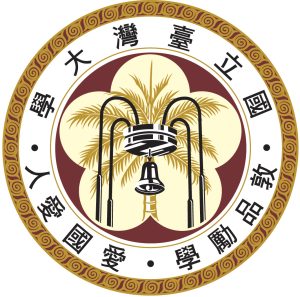2018.10
Invited Talk: Advanced Plasmonic Photoconductive Optoelectronics (National Taiwan University)

Time: 10/12 (Mon) 220pm-400pm
Abstract:Terahertz technology has attracted extensive attention because of its unique applications in environmental monitoring, space explorations, chemical identification, security screening, medical imaging, and biological sensing. In the meantime, the practical feasibility of many terahertz systems is still limited by the relatively low power, low efficiency, and bulky nature of existing terahertz sources. In this talk, I will present some of our recent results on achieving high-performance terahertz sources to mitigate performance limitations of existing terahertz systems. By incorporating plasmonic contact electrodes on photoconductive antennas, we have successfully demonstrated high-performance photoconductive terahertz sources with record-high optical-to-terahertz conversion efficiencies and record-high power levels of several milliwatts. With this generated terahertz power level, we can offer numerous opportunities for biomedical imaging, agricultural inspection, pharmaceutical quality control, and security screening systems.
Bio:Prof. Shang-Hua Yang is a tenure-track assistant professor in department of electrical engineering at National Tsing Hua University. He received his B.S. degree in electrical engineering from National Tsing Hua University, Taiwan, in 2007, M.S. degree in electro-optical engineering from National Chiao Tung University, Taiwan, in 2009, and Ph.D. degree in electrical engineering from the University of Michigan Ann Arbor in 2016. Prof. Yang has established significant contributions to the development of ultrafast electronics, microwave photonics, terahertz optoelectronics, integrated terahertz systems as well as innovative plasmonic photonics applications. The outcomes of his research have appeared in over 60 refereed papers in peer-reviewed journals and conference proceedings on these topics. He has received several prestigious awards and scholarships including the United Microelectronics Corporation Scholarship (2007), Rotary Education Foundation Best Student Award (2008), Rackham fellowship (2011-2012), SPIE Scholarship in Optics and photonics (2012), IEEE Antennas and Propagation Society Doctoral Research Award (2014), Rackham Summer Graduate Student Award (2015), Taiwanese Government Scholarship to Study Abroad (2015), Joan and Irvin Jacobs TIX Institute Industry Scholar (2017, 2018) and MOST Young Scholar Fellowship (2018). He was also a Lindau Nobel Laureate Meeting Young Scientist Fellow in 2016.
